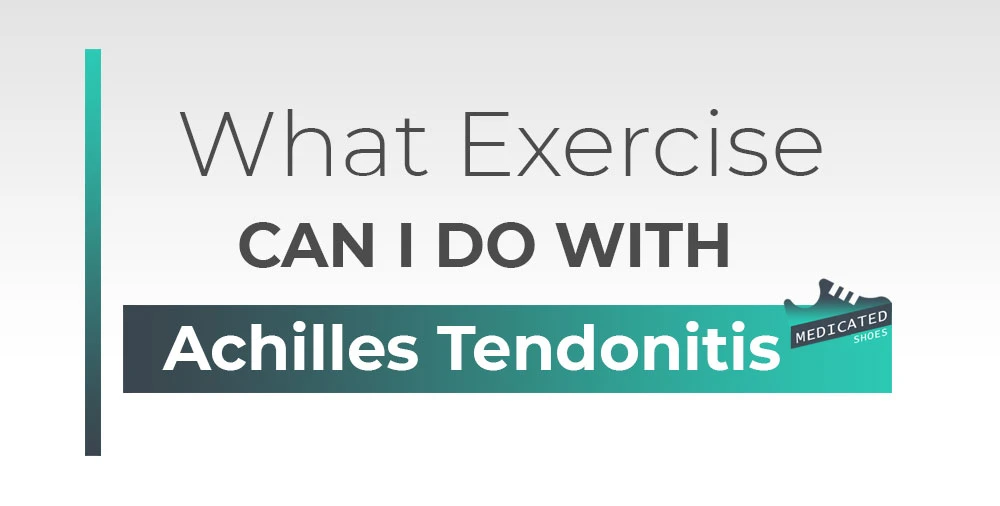If you’re dealing with Achilles tendonitis you might be wondering what exercises you can do to help alleviate the pain and promote healing. In this blog post, we’ll explore a few options that can help you stay active and healthy while managing your Achilles tendonitis.
By following a carefully designed exercise program you can improve your strength, flexibility, and range of motion and ultimately recover from this injury more quickly and effectively. Whether you’re a seasoned athlete or simply looking to maintain your fitness there are plenty of options available to help you stay active and healthy despite your Achilles tendonitis.
Here are some exercises you can do with Achilles tendonitis:
Stretching
Stretching is an important part of any exercise routine and it’s especially important for those with Achilles tendonitis. Stretching helps to improve flexibility and range of motion in the ankle and calf muscles which can help to alleviate pain and prevent further injury.
Stretches For Achilles Tendonitis:
- Calf stretches: Stand facing a wall with your hands on the wall and one foot behind you. Keeping your heel on the ground lean forward into the wall until you feel a stretch in your calf. Hold for 30 seconds and repeat on the other side.
- Ankle stretches: Sit on the ground with your legs extended in front of you. Loop a towel around the ball of your foot and gently pull it towards you until you feel a stretch in your ankle. Hold for 30 seconds and repeat on the other side.
- Achilles stretches: Stand facing a wall with one foot in front of the other and your hands on the wall. Keeping your back heel on the ground, lean forward into the wall until you feel a stretch in your Achilles tendon. Hold for 30 seconds and repeat on the other side.
Aquatic exercises
Exercising in water can be a great option for those with Achilles tendonitis because it allows you to move without the impact and strain on your joints. Some aquatic exercises to try include:
- Leg lifts: Stand in chest-deep water and lift one leg out of the water keeping it straight. Hold for a few seconds and then lower it back down. Repeat on the other side.
- Ankle circles: Stand in chest-deep water and make small circles with your ankle in both directions.
- Aquatic jogging: Jog or walk in waist-deep water to get a low-impact cardiovascular workout.
Stationary biking
Stationary biking is another low-impact exercise that can be beneficial for those with Achilles tendonitis. Biking allows you to get a cardiovascular workout without putting strain on your Achilles tendon. Just be sure to adjust the resistance to a level that is comfortable for you.
Elliptical trainer
Similar to stationary biking the elliptical trainer is a low-impact exercise that can be beneficial for those with Achilles tendonitis. The elliptical trainer allows you to get a cardiovascular workout without putting strain on your Achilles tendon. Just be sure to adjust the resistance to a level that is comfortable for you.
Yoga
Yoga can be a great way to stretch and strengthen the muscles in your ankles and calves which can help to alleviate pain and prevent further injury from Achilles tendonitis. Some yoga poses to try include:
- Downward facing dog: Start in a plank position and then lift your hips up and back creating an inverted V shape with your body. Keep your heels on the ground and hold for a few breaths.
- Tree pose: Stand on one leg and lift the other foot placing it on the inner thigh of your standing leg. Raise your arms above your head and hold for a few breaths.
- Warrior II: Step one foot back and bend the front knee. Extend your arms out to the sides and hold for a few breaths.
Pilates
Pilates is a form of exercise that focuses on strengthening the core and improving flexibility and balance. Some Pilates exercises that can be beneficial for those with Achilles tendonitis include:
- Single leg circles: Lie on your back with one leg extended and the other bent. Lift the bent leg off the ground and make small circles with it in both directions.
- Scissor kicks: Lie on your back with your legs extended and lift one leg off the ground. Bring the lifted leg towards your chest and then extend it back out crossing it over the other leg. Alternate legs and repeat.
- Leg press: Sit on the edge of a chair with your feet on the ground and your hands on the sides of the chair. Lift one leg off the ground and then press it back down. Repeat on the other side.
exercises to avoid with achilles tendonitis
Achilles tendonitis can be caused by overuse or improper form during exercise, and it can be especially common in activities that involve a lot of jumping or running. To prevent or manage Achilles tendonitis it is important to avoid exercises that put excessive strain on the tendon. Here are some exercises to avoid if you have Achilles tendonitis:
High impact activities
Such as running or jumping can place a lot of strain on the Achilles tendon. If you have tendonitis, it is best to avoid these exercises until the inflammation has subsided.
Hill sprints
Hill sprints are a great way to build strength and power but they can be tough on the Achilles tendon. The steep incline puts extra stress on the tendon which can worsen inflammation.
Calf raises
Calf raises are a common exercise that targets the calf muscles but they can also put extra strain on the Achilles tendon. If you have tendonitis it is best to avoid calf raises or modify the exercise to reduce the load on the tendon.
Plyometrics
Plyometric exercises such as jump squats or box jumps involve quick and explosive movements that can be tough on the Achilles tendon. If you have tendonitis it is best to avoid plyometrics or modify the exercise to reduce the impact on the tendon.
Deep squats
Deep squats can be tough on the Achilles tendon especially if you have poor mobility or technique. If you have tendonitis it is best to avoid deep squats or modify the exercise to reduce the load on the tendon.
Conclusion
It’s important to note that these exercises should be done with caution and under the guidance of a healthcare professional. If you are experiencing pain while doing any of these exercises stop immediately and consult with your healthcare provider.
In addition to incorporating these exercises into your routine, it’s also important to take proper care of your Achilles tendon to help prevent further injury. This includes wearing proper shoes with good arch support stretching before and after exercise and taking breaks to allow your body time to recover.

